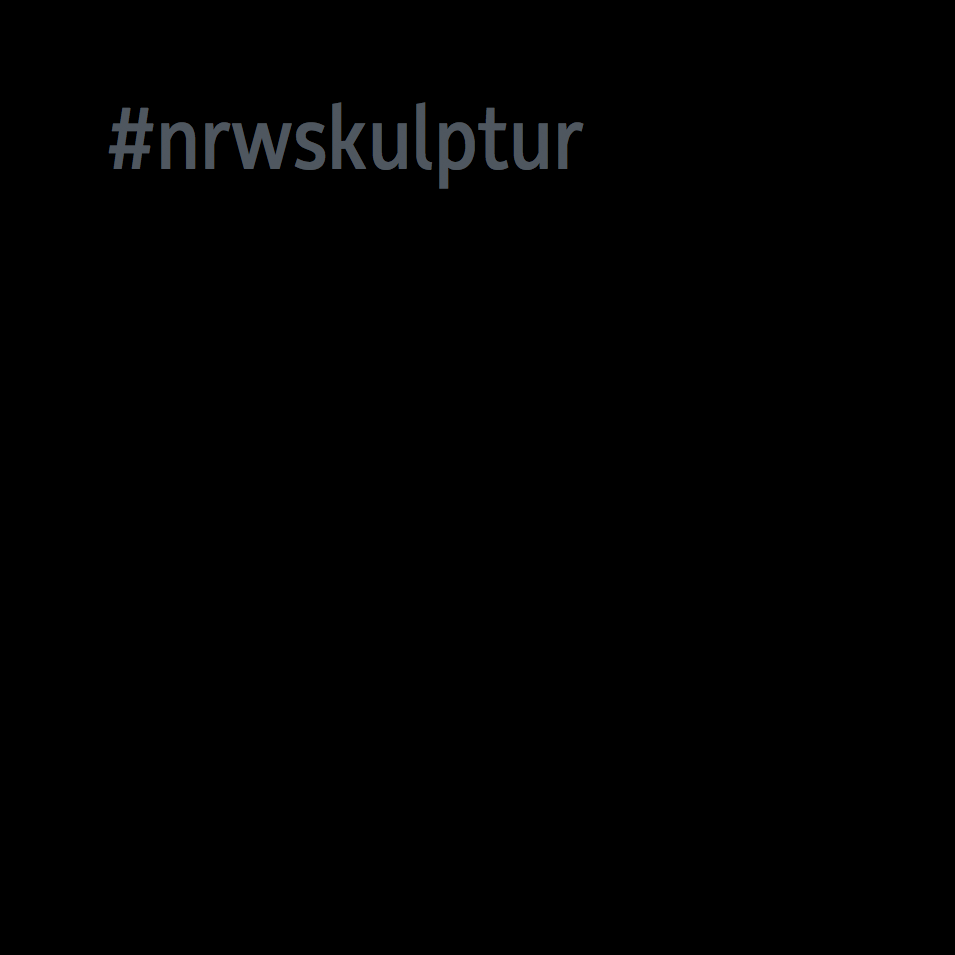Das Geleucht / Miner’s Lamp

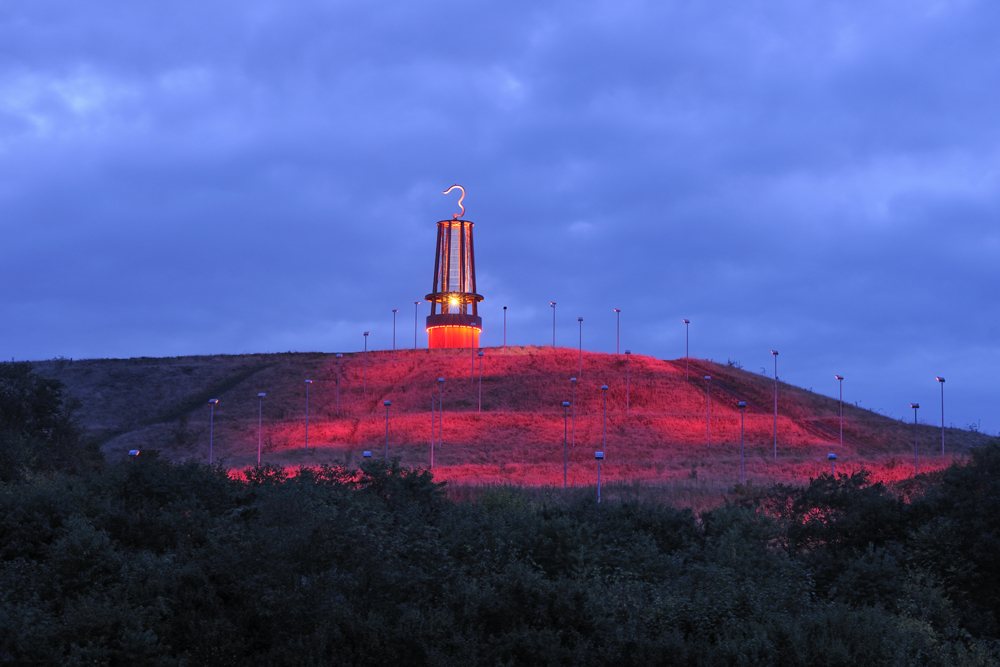
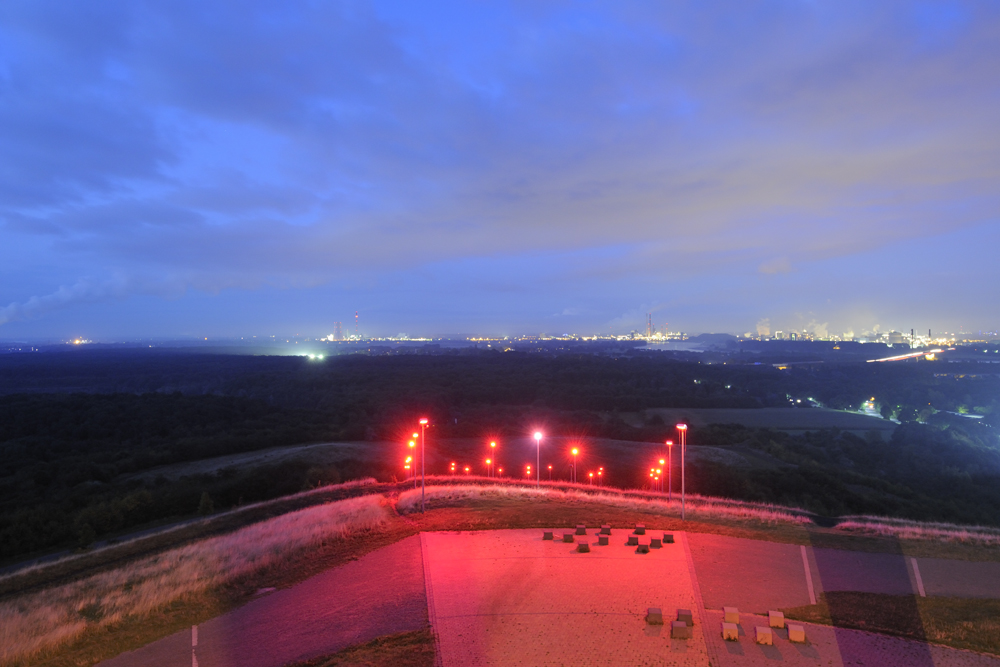
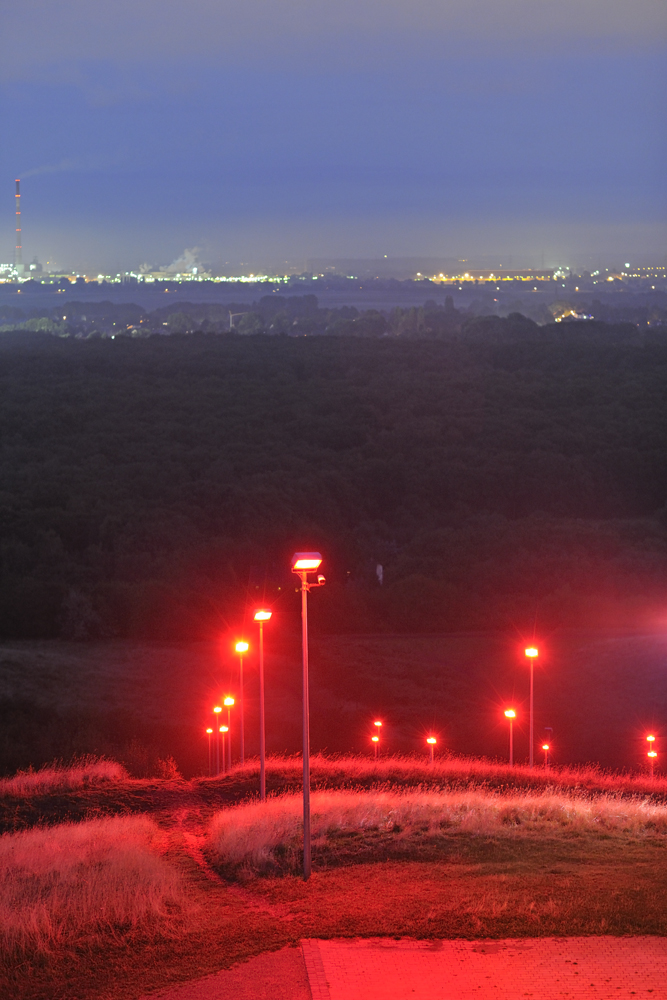
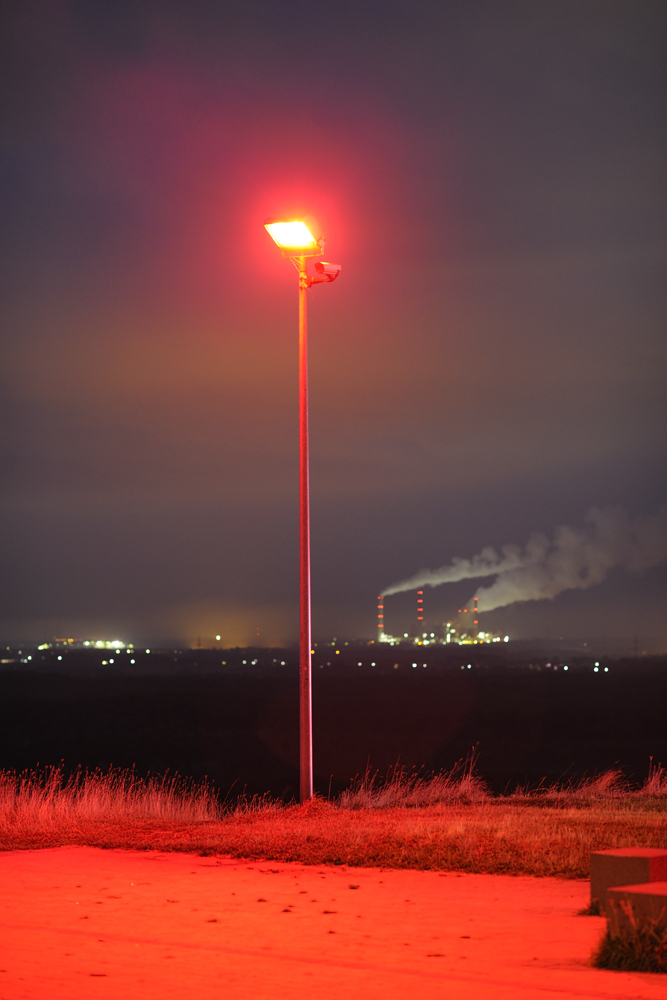
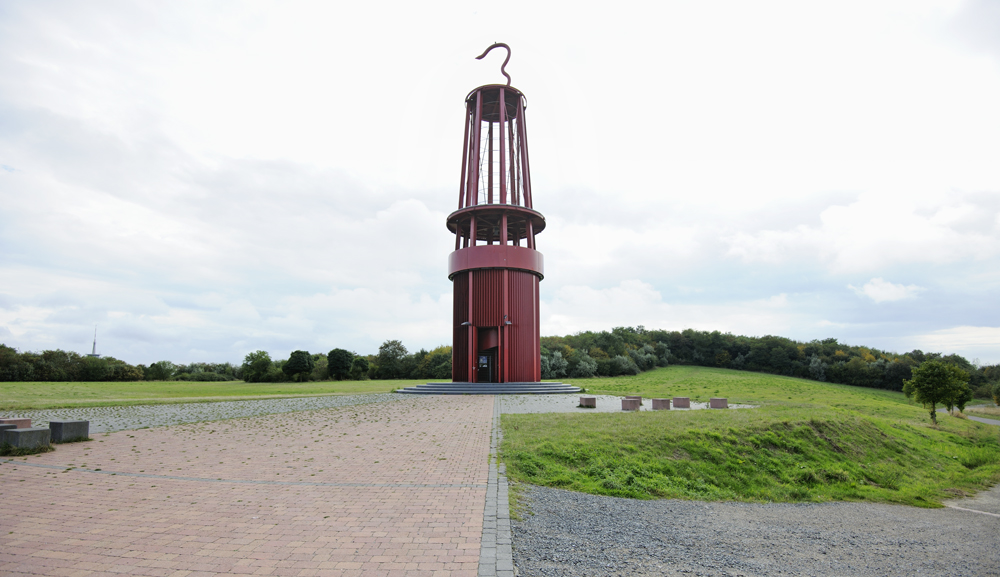
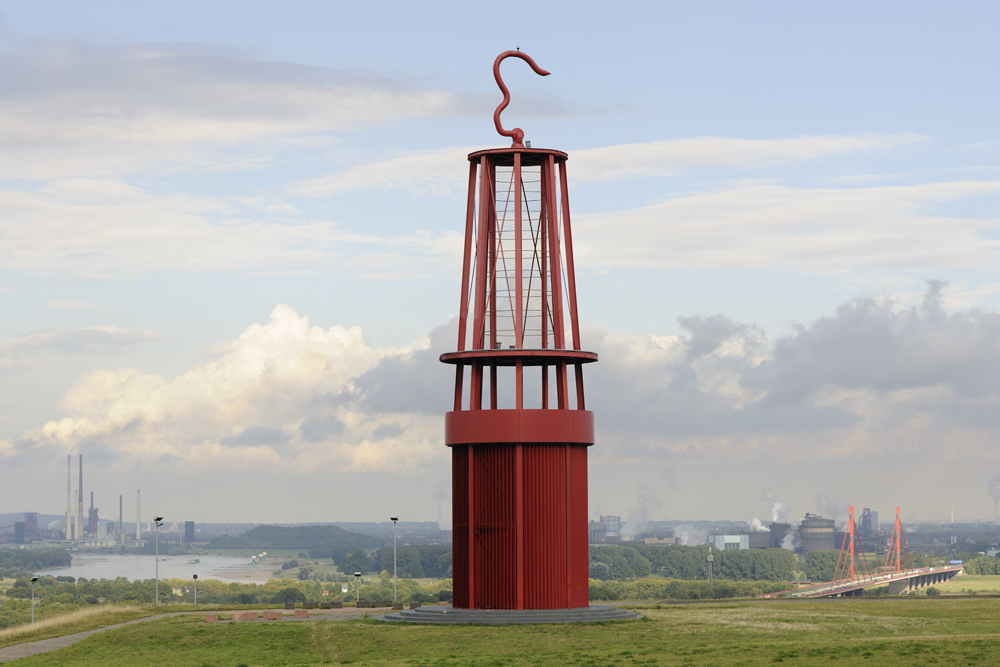


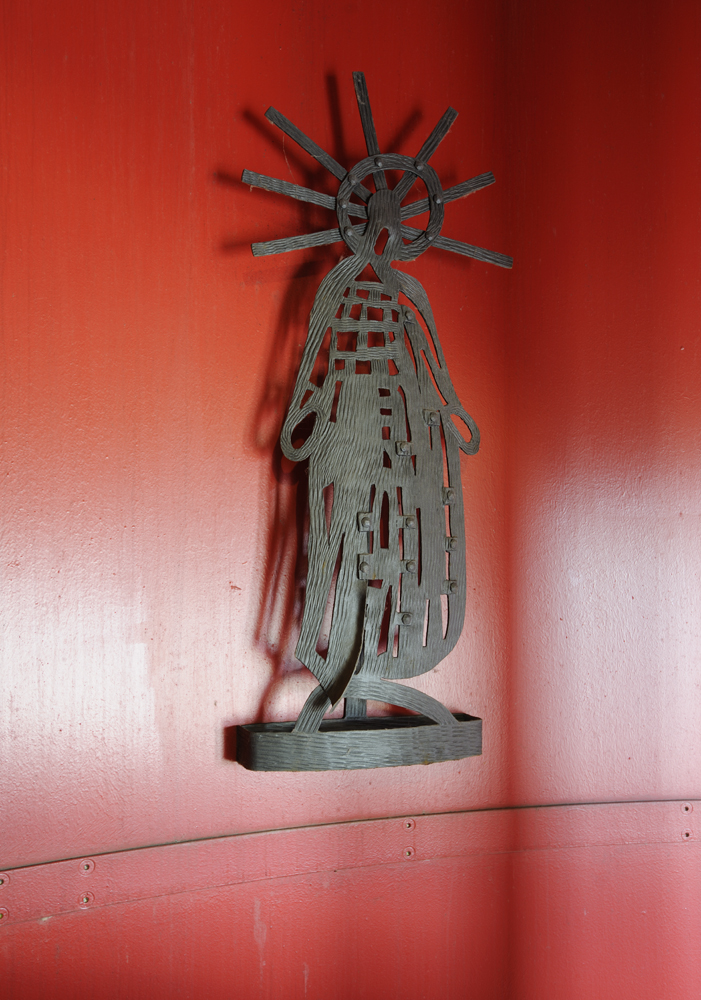
This widely visible light installation consists of a lighthouse in the form of a red miner’s lamp and 35 lampposts that illuminate a ca. 8,000-square-meter area with red light. Zero founder Otto Piene, who works primarily with the elements of light, air, and fire, created this work as a monument to the Ruhrgebiet’s industrial past, particularly its miners and workers.
The lighthouse is a steel structure that may be entered by visitors. Inside, a spiral staircase leads to a roughly 10-meter-high viewing platform with the lamp’s light source situated above it. From the platform, you can look out across the landscape, which was largely shaped by the mining industry. While the lamp is a classic symbol of mining, the red glow on the surface of the mining waste heap is reminiscent of the flowing molten metal that was once produced in the region’s blast furnaces.
The monumental and elaborate installation took eight years to complete from conception through realization. In the summer of 1999, the exhibition Kunst setzt Zeichen – Landmarken-Kunst / Art Shows the Way – Landmark Art took place as part of the IBA (Internationale Bau Ausstellung / International Architecture Exhibition) in Oberhausen. Here, Otto Piene’s design for a new light installation atop the slag heap Halde Rheinpreußen in Moers was already receiving special attention. One year later, the heap was included in the lead project of the inter-community project Landschaftspark NiederRhein. At the same time, the Förderkreis Landmarke Grubenlampe / Mining Lamp Landmark Sponsors Group was founded.
The project gained numerous private and public sponsors. The blueprints, as well as a feasibility study, were prepared in the years between 2003 and 2005. The first groundbreaking for construction stage 1 (lighting and infrastructure) took place in 2005. In 2006, the field of red lights was installed on the northeastern side of the slag heap. Construction stage 2 (construction of the lighthouse in the form of a miner’s lamp) began on Otto Piene’s 79th birthday in 2007. By September 17, 2007, the Moers mayor was able to present the Miner’s Lamp to the public with the artist in attendance.
Further reading:
“Das Geleucht“ – Die Entstehung des Montan-Kunstwerkes auf der Halde Rheinpreußen in Moers; Editor: Förderkreis Landmarke Grubenlampe e. V., Dinslaken.
Faltblatt der Stadt Moers, “Moers bietet mehr – Das Geleucht von Otto Piene,“ Der Bürgermeister – Wirtschaftsförderung, Rathausplatz 1, 47441 Moers.
Otto Piene
← Zur Startseite
Moers, Römerstraße, corner of Gutenbergstraße and then about 1500 meters uphill by foot
